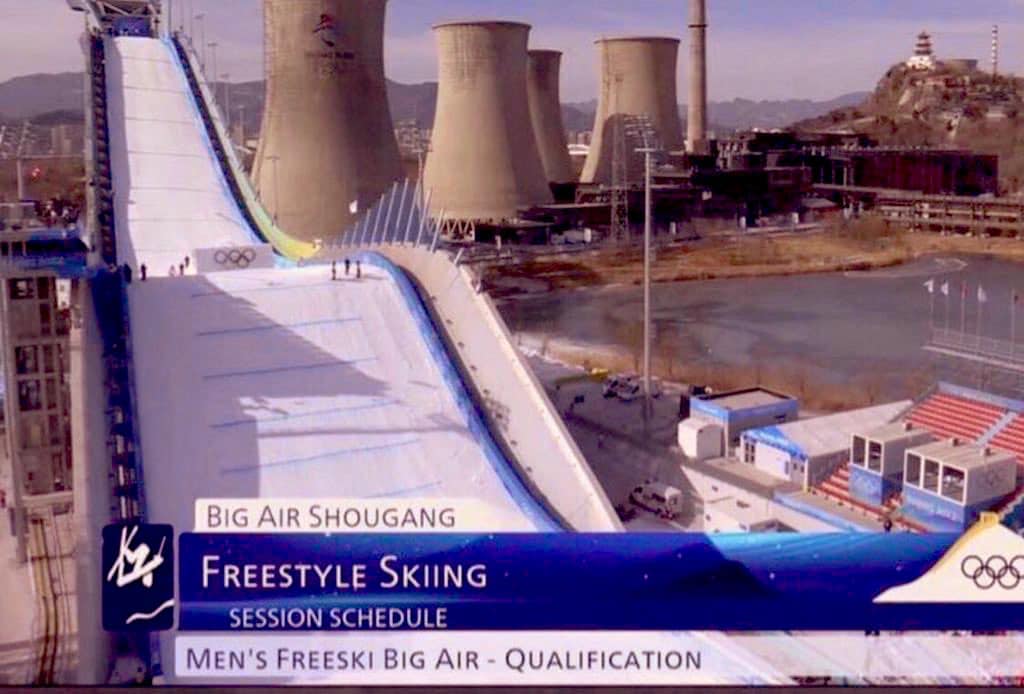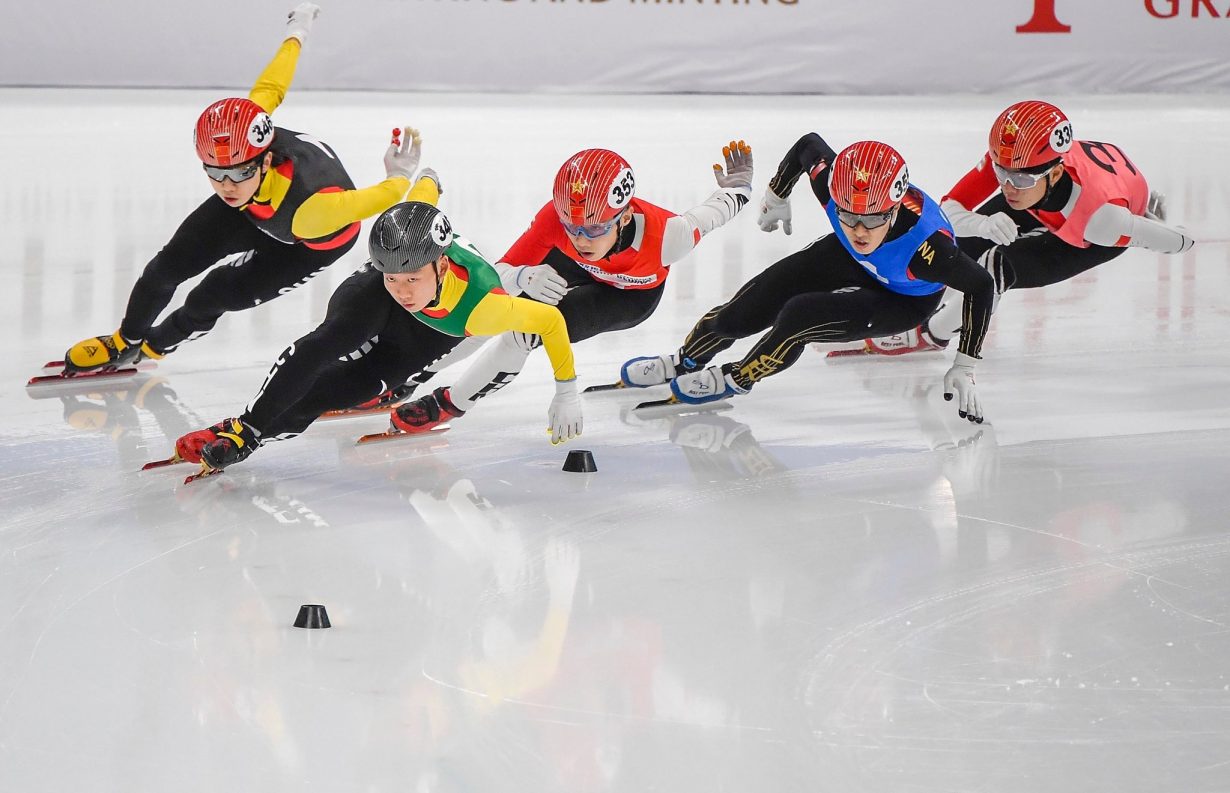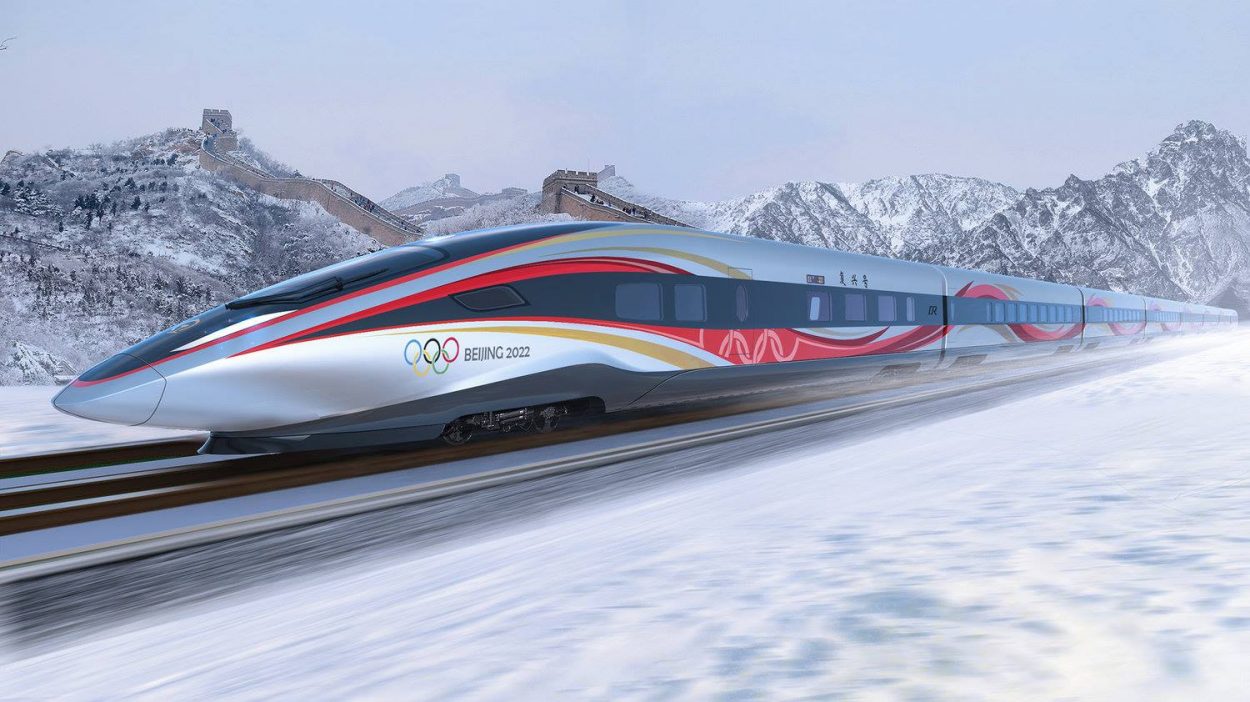The ongoing Beijing Winter Games, one of the most controversial Olympic events in history, continues to hog the limelight. The new topic of discussion for netizens is the venue for ski events, many of whom were left wondering if it was a tower or a mill or an abandoned nuclear plant.
Missile Attack From China! New Report Unearths ‘Kim’s Ingenious Plan’ To Attack US, Allies From Beijing’s Backyard
While the Chinese are gushing over the gold medal won by its 18-year-old freestyle skier Gu Ailing Eileen, the social media users who are otherwise used to seeing snow-laden splendid mountains as winter sports venues have other concerns.
The Big Air Shougang Olympic site in Beijing is attracting attention for its edgier, urban atmosphere this time. Furnaces, massive chimney stacks, and cooling towers stand behind the skiers throwing themselves down the 60-meter-high (196-foot) ramp. It is the site of a now-defunct steel factory that contributed to Beijing’s notoriously polluted skies for decades.

Even though the towers of this closed steel factory have been projected by China as an icon of sustainability, Twitterati is referring to the cooling towers as part of a nuclear plant.
Officials, however, said the Shougang industrial park was chosen to demonstrate sustainability, highlighting how an industrial area was transformed into a cultural and leisure destination.
In fact, the cooling towers have been gelled into the event instead of being covered. They proudly stand behind the ramp, bearing the symbol of the sporting event, they said.
A Leisure Destination
The mill, which opened in 1919, was shut down 15 years ago to clean up the air in the city in preparation for the 2008 Summer Olympics, stated CNN.
Threatening The US, ‘Shaking The World’ – How Is ‘Bankrupt’ North Korea Funding Its Hypersonic Missile Program?
According to Engineering and Design firm ARUP, this left a vast length of prime city center land perfect for rehabilitation and regeneration. The site was restored into a lively hub for tourist and art exhibitions, and it even hosted an electronic music festival in 2013.
The mill’s rusted, decaying relics were never demolished, not even for the 2022 Winter Olympics.
Orbital Drive and I discussed the beauty of the Chinese steel mill landscape and how the Port of Tianjin explosion was perhaps the greatest human achievement to date pic.twitter.com/uHtdHB8NNL
— ХСЯ (@high_lethality) February 9, 2022
Some viewers and athletes, like Eileen Gu, Team China’s gold medalist in freestyle skiing, were impressed. “The venue is fantastic,” Eileen said. “I mean, look around, there’s no snow anywhere else. And somehow when you’re skiing on this job, you feel like you’re on a glacier somewhere.”
According to ARUP, the whole production plant, which is owned and controlled by the state-owned steel business Shougang Group, was relocated to Caofeidian in the neighboring Hebei Province in 2005.

The decision to relocate the factory was made as part of Beijing’s economic restructuring and pollution-control efforts.
China is the world’s largest emitter of greenhouse gases, accounting for more than a quarter of global emissions each year, exacerbating the climate problem.
Springfield Nuclear Plant in China
The most interesting commentaries came from random Twitter users, some of whom even wondered if it might be a nuclear plant.
“The Big Air stadium at the Olympics seems to be right next to the Springfield Nuclear Power Plant,” a user by the name of @jlove1982 wrote.
The Big Air stadium at the Olympics seems to be right next to the Springfield Nuclear Power Plant. pic.twitter.com/5CbedtGu3h
— John Lovett (@jlove1982) February 7, 2022
For some netizens, the venue seems to have brought back memories of Homer Simpson’s workplace in Fox’s classic animated sitcom, The Simpsons.
Another user with the username, @LindsayMpls, wrote: “Feels pretty dystopian to have some kind of nuclear facility as the backdrop for this Big Air skiing event.”
Feels pretty dystopian to have some kind of nuclear facility as the backdrop for this Big Air skiing event ? pic.twitter.com/l0nIvgX5Pv
— Lindsay (@LindsayMpls) February 7, 2022
The Shougang Large Air is the world’s first long-term permanent big air venue. According to the architecture firm TeamMinus, which built the leap, it sits on the edge of the Qunming Lake, on the west side of the cooling towers at 88 meters (288 ft) above sea level.
On their website, TeamMinus explained how its design was influenced by Chinese flying apsaras, celestial entities that exist in both Buddhist and Hindu cultures.
Games Mired In Controversies
The Beijing Olympics have been riddled with things unrelated to sports. Even before the event was inaugurated, it was boycotted by the United States and its allies. China also continues to deal with an Omicron virus surge in different pockets of the country that has made the going tough for the administration.
However, China has not shied away from making the most of the Olympics in terms of scoring political points and sending out powerful messages to its adversaries. It honored the PLA Commander involved in the 2020 Galwan conflict, Qi Fabao, by choosing him as a torch-bearer for the Olympics. Outraged by the audacity, India too decided to bail itself out of the event.

Later, in separate meetings with Russian President Vladimir Putin and Argentine President Alberto Fernandez on the sidelines of the event, Chinese President Xi Jinping said Western actions in Ukraine and Falkland Islands as unwarranted aggression stemming from Cold War mentality. Xi also used both meetings as an opportunity to reiterate China’s claim over Taiwan.
- Contact the author at sakshi.tiwari9555@gmail.com
- Follow EurAsian Times on Google News




